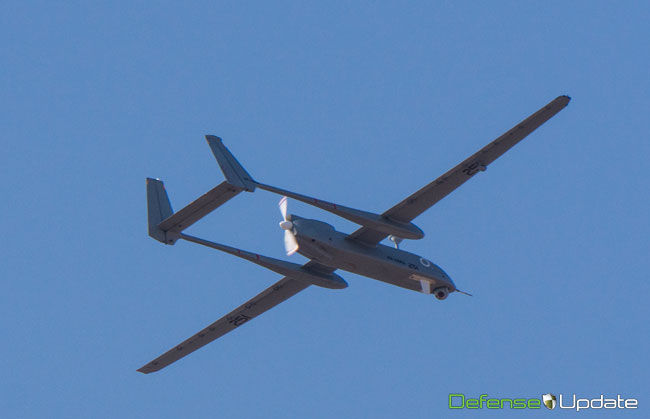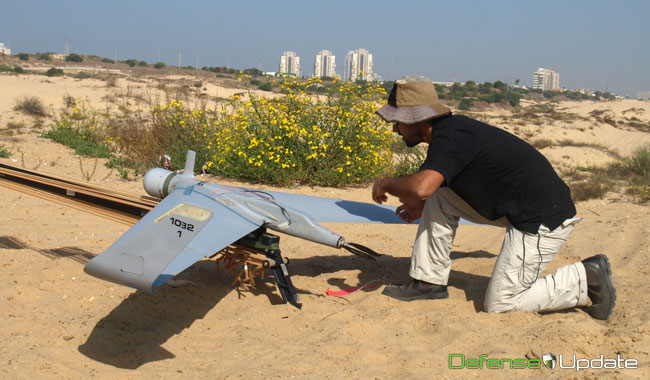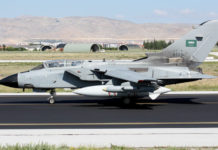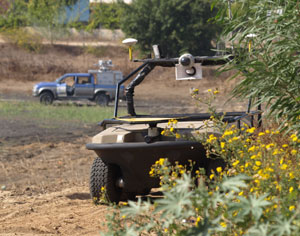
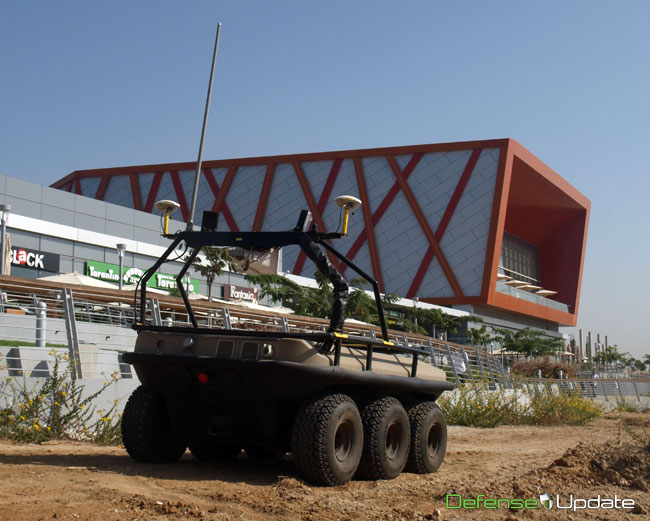
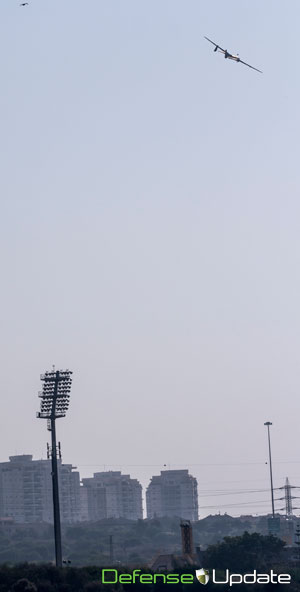
Citizens of the seaside town of Rishon Lezion, south of Tel-Aviv woke up today to an unfamiliar sound, as an IAI Heron I unmanned vehicle roamed low over the edge of the city, buzzing over the ‘Yes Planet’ range. Defense-Update reports.
The heron was not alone here. Some of Israel’s leading unmanned systems manufacturers gathered here today, to test their systems in a live rehearsal, prior to the Autonomous Unmanned Systems & Robotics event, scheduled at this site on 26 November.
The test provided an opportunity to test the operational protocols, safety measures and necessary preparations required for safe and impressive display.
This unprecedented display has been coordinated between Israel’s Civil Aviation Authorities, Airport authorities, the displaying companies and representatives from the event organizer for months, adhering to the regulation procedures the CAA has been implementing in recent years, and ensuring that safety measures and environmental concerns are followed.

The Heron I is the largest UAS taking part in the display. Apart from the Heron, IAI will debut an Autonomous Surface Vessel here, along other systems displayed at the static park.
Apart from the Heron I which made its first ever ‘official’ flight over the city edge, the Orbiter II was also flown here by a team from Aeronautics. On the ground, the Amstaf unmanned ground patrol vehicle performed, simulating a security mission, with the Light Eye aerostat-borne surveillance system from Shilat Optronics watching from above. Light Eye and the Hovermast 100 from Skysapience, are both making their public demonstration debut at the event.
Other participants will include the Guardium and TAGS robotic vehicles from G-NIUS, and the Orbiter III from Aeronautics.
Aerial vehicles, aerostats and ground vehicles will be feeding live video and sensor data to a large display, enabling the audience to experience the performance of unmanned systems first hand.
